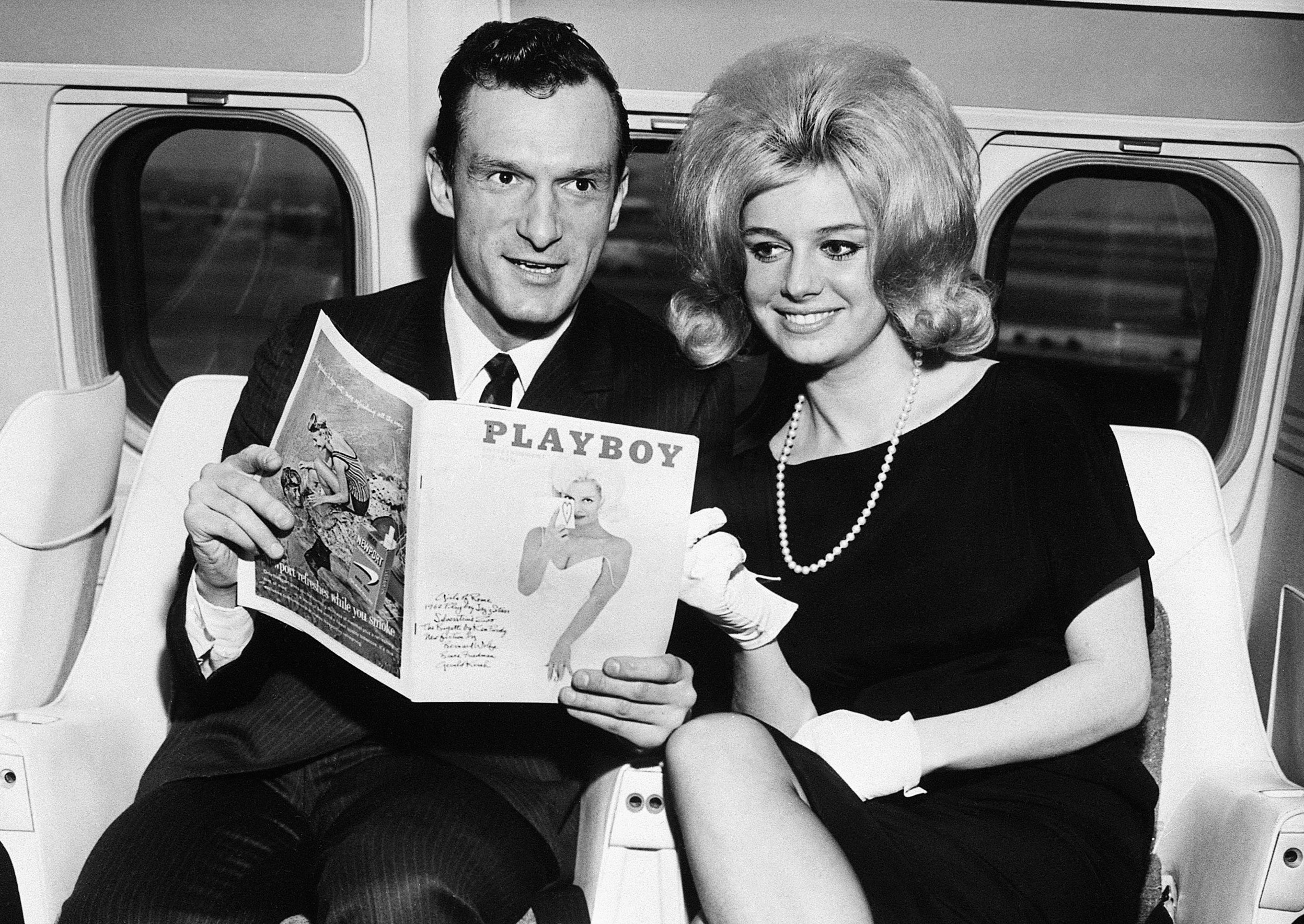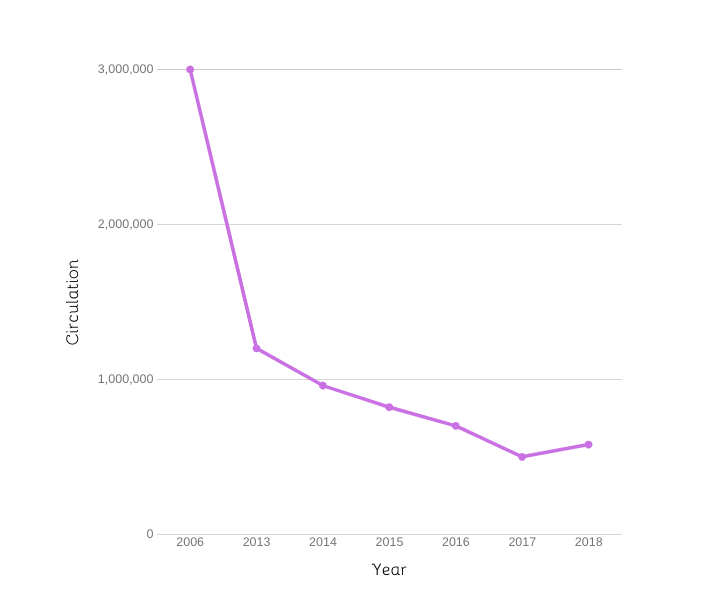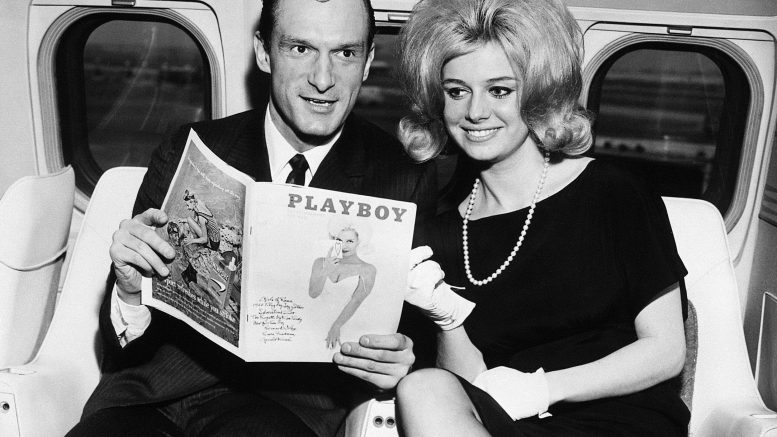
Hugh M. Hefner, Editor and Publisher of Playboy, is shown with Cynthia Maddox, the blond cover girl on the February issue of his magazine, arriving by TWA superjet from Chicago.
More than half a century ago, the very first issue of Playboy magazine was published, with iconic actress Marilyn Monroe on the cover. It was left undated by Hugh Hefner because he feared it might be unsuccessful. The issue sold out in just a few weeks. Now, however, the magazine is in trouble.
Marilyn Monroe on the cover of the first ever Playboy, December 1953 pic.twitter.com/3ZqEmO5OHt
— throwbacks (@timelessbae) July 15, 2017
With growing competitors throughout the years, such as Penthouse and Oui, as well as the growing availability of free pornography on the internet, Playboy has managed to hold their brand as one of the most iconic magazines aimed towards men.
Described initially as an “entertainment for men” magazine, the overall outlook of the publication has certainly gone through many changes since it was first published, especially in the last few years. The magazine has changed visually – and not just in the issues’ physical appearance and design.
In 2015, for example, Playboy announced that they would no longer be featuring full frontal nudity in their magazines from the March 2016 issue onwards. The reasoning behind this, according to Josh Horwitz from Quartz, was in order to attract a higher Asian market, a location where governments take on a tougher attitude towards pornography. In the forefront were China, a country where many anti-porn campaigns have been announced in recent years yet were profiting from sales of items with the Playboy bunny logo, and India, where attempts to open Playboy-branded clubs was swatted by authorities twice.
Less than a year after, the company’s chief creative officer claimed that it had been a mistake to drop nudity, with the magazine announcing their return to featuring nudity in their issues on social media with a the hashtag #NakedIsNormal:
Our March/April 2017 cover #NakedIsNormal https://t.co/FhCkcmnV0S pic.twitter.com/WSxMElDa94
— Playboy (@Playboy) February 13, 2017
The dropping of a major characteristic of the magazine, the subtitle “entertainment for men”, made the publication more gender neutral, as it meant that Playboy was now not just ‘aimed at men’, but anyone who expressed desire to read it, meaning that this change was made to stay in line with the evolution of gender roles, due to the growing awareness of gender neutrality around the world. The dropping of the subtitle could also imply that the company was trying to seem less sexist, as the’ve been hit with claims multiple times that it was.
Hugh Hefner is no 'hero' – he built an empire on misogyny, argues @ClaireShrugged https://t.co/XnAy2uE6tp pic.twitter.com/lDZVunBJTD
— British GLAMOUR (@GlamourMagUK) September 28, 2017
The second characteristic, although temporary, was definitely the fact that they decided to drop full frontal nudity from their magazines. During the year of 2017, annual sales dropped from 700k to 500k, and they didn’t seem to recover well when they introduced nudity again, as sales only raised slightly to a mere 579k. These numbers, in comparison to a decade ago where they would sell around three million yearly, are extremely low.

Data from CNBC.
When Hefner died on September 27 last year, however, the New York Post found out that the magazine might be close to its demise. Rapidly decreasing numbers in both advertisers and readers in have meant that Playboy has found itself in a sticky situation. And, when Rizvi Traverse bought a controlling stake in Playboy Enterprises in 2011, he promised the print version would remain alive as long as Hefner was, too.
Since January this year there has been constant chatter about whether or not the print version may be discontinued, but if circulation numbers continue to dwindle… they might be better off spending this money somewhere else.
- “Playboy. May1994.” by Elvert Barnes, on Flickr
- “Playboy. July1994.” by Elvert Barnes, on Flickr
- “Playboy. December1995. Front.” by Elvert Barnes, on Flickr
- “Playboy. January1997.” by Elvert Barnes, on Flickr
- “Playboy. April1998.” by Elvert Barnes, on Flickr
Words: Sissi Yi Hu | Subbing: Maria Campuzano
Featured image: Photo by Tullio Saba, on Flickr.






